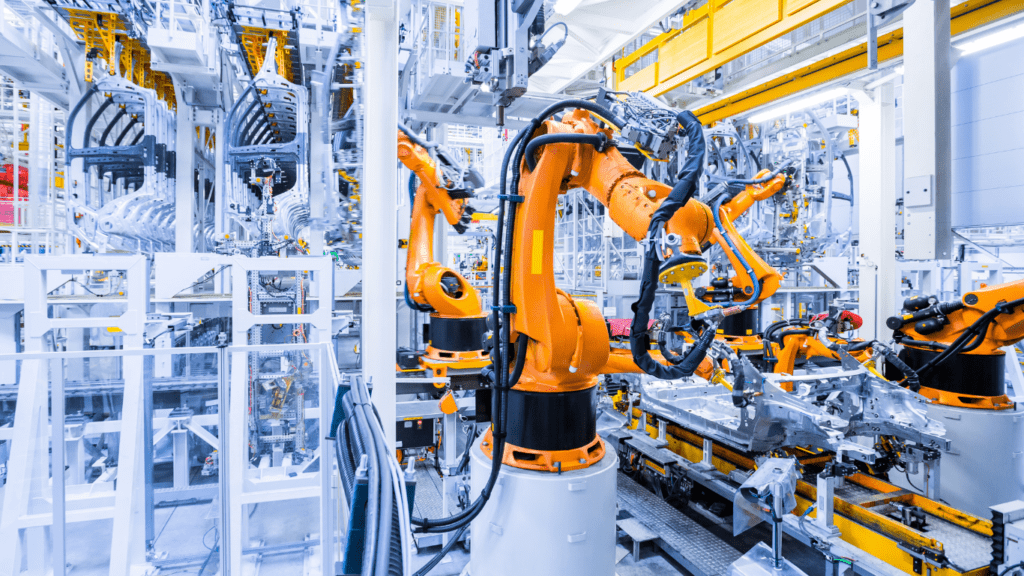In the realm of Internet of Things (IoT), the fusion of Artificial Intelligence (AI) and Machine Learning has revolutionized the way devices interact and operate. As an enthusiast in this field, I’ve witnessed firsthand the transformative power of AI algorithms in enhancing IoT capabilities. From predictive maintenance to real-time data analysis, AI and Machine Learning are reshaping the landscape of interconnected smart devices.
In my exploration of the synergy between AI, Machine Learning, and IoT, I’ve uncovered the intricate ways in which these technologies collaborate to optimize efficiency and drive innovation. The seamless integration of AI algorithms into IoT ecosystems not only streamlines processes but also empowers devices to make intelligent decisions autonomously. Join me as we delve deeper into the symbiotic relationship between AI, Machine Learning, and IoT, unraveling the endless possibilities they offer in reshaping our connected world.
Overview of IoT
Exploring the landscape of the Internet of Things (IoT) provides a glimpse into the interconnected network of physical devices, vehicles, appliances, and other gadgets embedded with sensors, software, and connectivity capabilities. These IoT devices collect and exchange data, creating a vast ecosystem of interconnected systems that share information seamlessly. The sheer scale and potential of IoT applications transcend various industries, revolutionizing how we interact with technology in our daily lives.
IoT Ecosystem
At the core of IoT lies the intricate web of devices, sensors, and networks that exchange data autonomously.
Examples: Smart home devices, wearable technology, industrial sensors.
Data Exchange
IoT devices gather and transmit data, enabling real-time monitoring and analysis for informed decision-making.
Examples: Monitoring environmental conditions, tracking inventory levels.
Industry Impact
IoT technologies have permeated industries like healthcare, agriculture, manufacturing, and transportation, driving efficiency and innovation.
Examples: Remote patient monitoring, precision agriculture, predictive maintenance in factories.
Challenges and Opportunities
While IoT offers numerous benefits, such as enhanced automation and connectivity, challenges like data security and interoperability remain key areas of focus.
Examples: Ensuring data privacy, standardizing communication protocols.
By delving into the overview of IoT, one can grasp the fundamental concepts that underpin the interconnected world of devices and data, setting the stage for understanding the pivotal role that AI and Machine Learning play in shaping the future of IoT applications.
Importance of AI in IoT
Integrating Artificial Intelligence (AI) in Internet of Things (IoT) systems holds significant importance due to its ability to enhance various aspects of IoT operations. AI brings a multitude of benefits to the IoT landscape, revolutionizing how interconnected devices function and interact within this dynamic ecosystem.
- Enhanced Data Analysis: AI algorithms can analyze vast amounts of data generated by IoT devices, identifying patterns, trends, and anomalies in real-time. This enhanced data analysis capability enables more accurate decision-making and predictive maintenance strategies.
- Improved Efficiency: By leveraging AI in IoT systems, processes become more efficient through automation and optimization. AI-powered algorithms can streamline operations, reduce downtime, and enhance overall system performance.
- Predictive Maintenance: AI plays a crucial role in predictive maintenance within IoT systems. By analyzing data patterns, AI algorithms can predict equipment failures before they occur, thus enabling proactive maintenance and minimizing disruptions.
- Advanced Security Measures: AI enhances the security of IoT devices and networks by detecting unusual activities, potential cyber threats, and data breaches. This proactive approach to security helps mitigate risks and protect sensitive information.
- Facilitation of Autonomous Decision-Making: AI empowers IoT devices to make autonomous decisions based on real-time data analysis. This capability is particularly valuable in applications where immediate actions or responses are required without human intervention.
- Customized User Experiences: AI in IoT systems can personalize user experiences by adapting to individual preferences, behavior patterns, and changing environmental conditions. This customized approach enhances user satisfaction and engagement.
- Scalability and Flexibility: The integration of AI technology in IoT systems enhances scalability and flexibility, allowing networks to adapt to changing requirements, accommodate growth, and seamlessly integrate new devices and functionalities.
- Energy Efficiency: AI optimization in IoT devices can lead to improved energy efficiency by automatically adjusting settings based on usage patterns and environmental factors. This results in reduced energy consumption and lower operational costs.
By embracing AI in IoT systems, businesses and industries can unlock unprecedented capabilities, drive innovation, and optimize operations for a more connected and efficient future.
Significance of Machine Learning in IoT
Building on the transformative impact of Artificial Intelligence (AI) discussed earlier, I delve into the crucial significance of Machine Learning in the realm of the Internet of Things (IoT). Machine Learning plays a vital role in optimizing IoT systems by enabling smart devices to learn from data patterns, make decisions, and improve their operation over time efficiently.
- Enhancing Predictive Maintenance:
Machine Learning algorithms empower IoT devices to predict potential failures or issues based on historical data, allowing proactive maintenance and minimizing downtime. For instance, in industrial settings, sensors coupled with machine learning models can forecast equipment failures before they occur, preventing costly disruptions. - Enabling Real-Time Data Analysis:
By leveraging Machine Learning in IoT, devices can analyze vast amounts of real-time data swiftly and accurately. This capability is invaluable in scenarios like smart homes where AI-powered devices can process data instantaneously to adjust settings based on user preferences and environmental conditions. - Facilitating Autonomous Decision-Making:
Machine Learning algorithms enable IoT devices to autonomously make decisions without human intervention, enhancing operational efficiency. For instance, autonomous vehicles use machine learning models to interpret data from sensors and cameras to navigate roads and make split-second decisions to ensure passenger safety. - Improving Security Measures:
Integrating Machine Learning into IoT systems enhances security by enabling devices to detect anomalies and potential threats in the network. These algorithms can identify unusual patterns in data traffic, alerting users to potential cyber attacks and safeguarding sensitive information in connected devices. - Customizing User Experiences:
Machine Learning algorithms in IoT devices can personalize user experiences by learning user preferences and behaviors. For instance, smart assistants like Alexa use machine learning to understand and adapt to users’ speech patterns, providing tailored responses and recommendations based on individual interactions. - Enhancing Scalability and Efficiency:
Machine Learning optimizes IoT systems for scalability and efficiency by automating processes and streamlining operations. This capability is beneficial in IoT applications such as smart cities, where machine learning algorithms can manage and optimize energy consumption across interconnected devices, promoting sustainability.
Machine Learning’s integration into IoT systems brings a myriad of benefits, ranging from predictive maintenance and real-time data analysis to autonomous decision-making and enhanced security measures. By harnessing the power of Machine Learning, industries and businesses can create more intelligent, efficient, and secure IoT ecosystems that drive innovation and transform the future of interconnected devices.
AI and Machine Learning Applications in IoT
I’ll discuss the applications of Artificial Intelligence and Machine Learning in the Internet of Things (IoT) to showcase their transformative impact on interconnected smart devices.
Predictive Maintenance in IoT with AI
In IoT systems, AI plays a crucial role in predicting maintenance requirements by analyzing real-time data from interconnected devices. By leveraging AI algorithms, predictive maintenance schedules can be optimized, reducing downtime and enhancing operational efficiency.
Enhancing IoT Security using Machine Learning
Machine Learning is instrumental in bolstering IoT security by identifying potential threats and anomalies in network behavior. Through pattern recognition and anomaly detection, Machine Learning algorithms can proactively secure IoT ecosystems, safeguarding sensitive data and ensuring the integrity of interconnected devices.
Impact of AI and Machine Learning on IoT Efficiency
Diving into the efficiency aspects of AI and Machine Learning in IoT, I’ll delve into how these technologies streamline operations and enhance overall system performance.
- Real-time Data Analysis: With AI and Machine Learning, IoT systems can analyze data instantaneously, enabling quick decision-making processes and optimizing resource utilization.
- Predictive Maintenance: By leveraging predictive algorithms, IoT devices can preemptively identify maintenance needs, reducing downtime and increasing operational efficiency.
- Autonomous Decision-making: AI empowers IoT devices to make autonomous decisions based on data analysis, enhancing efficiency by eliminating delays in manual intervention.
- Enhanced Security: Machine Learning algorithms can detect abnormal patterns in network behavior, bolstering IoT security and minimizing risks of cyber threats.
- Personalized User Experiences: AI in IoT enables personalized interactions based on user preferences, enhancing user satisfaction and engagement.
- Scalability and Flexibility: Machine Learning algorithms support scalability, allowing IoT systems to adapt to varying workloads seamlessly, thereby optimizing efficiency.
- Energy Efficiency: AI-driven optimization helps in managing energy consumption more effectively, ensuring sustainable operations and reducing costs in IoT setups.
The integration of AI and Machine Learning in IoT leads to a significant boost in efficiency across various aspects, ensuring smoother operations and improved performance in interconnected smart systems. These advancements pave the way for more intelligent, secure, and efficient IoT ecosystems, driving innovation and shaping the future of connected devices.
Challenges and Future Directions
Expanding the horizons of AI and Machine Learning within the realm of IoT comes with its set of challenges and opportunities for the future. Addressing these hurdles is crucial for the continued advancement and integration of these technologies into IoT ecosystems.
- Security Concerns:
Ensuring the security of interconnected devices remains a paramount challenge. As IoT systems become more complex and interconnected, the vulnerability to cyber threats increases. Enhancing security measures and developing robust encryption protocols are essential to safeguarding sensitive data and preventing potential breaches. - Data Privacy:
Preserving data privacy in the era of AI-driven IoT is another critical challenge. With the immense volume of data generated and analyzed by interconnected devices, maintaining privacy standards and compliance with regulations such as GDPR is imperative. Striking a balance between data utilization for improving services and protecting user privacy is a delicate yet necessary task. - Interoperability Issues:
The interoperability of diverse devices and platforms poses a significant challenge. Ensuring seamless communication and integration between different IoT devices and systems requires standardization and compatibility protocols. Overcoming these interoperability challenges is essential for the efficient functioning of interconnected IoT networks. - Scalability and Resource Management:
As IoT networks expand, scalability and resource management become pressing issues. Efficiently scaling IoT systems to accommodate the growing number of devices while optimizing resource utilization is crucial. Implementing scalable architectures and resource-efficient algorithms is key to meeting the increasing demands placed on IoT infrastructures. - Ethical and Societal Implications:
The ethical and societal implications of AI and Machine Learning in IoT introduce complex challenges. Addressing issues related to bias in algorithms, transparency in decision-making processes, and the potential impact on employment and human interactions is essential. Striking a balance between technological advancement and ethical considerations is vital for creating sustainable and beneficial IoT ecosystems.
Navigating these challenges and paving the way for the future of AI and Machine Learning in IoT requires a collaborative effort from industry experts, policymakers, and technology innovators. By addressing these challenges head-on and proactively seeking solutions, we can unlock the full potential of these transformative technologies and shape a more intelligent, secure, and efficient future for IoT ecosystems.


 Marylou Grant is a key helper at The Code Crafters Hub, where she contributes significantly to the development and growth of the platform. Her expertise in software development and her passion for technology make her an invaluable asset to the team. Grant's work involves everything from assisting with content creation to ensuring the site's functionalities meet the highest standards, which helps in delivering a seamless experience to users.
Her dedication to The Code Crafters Hub is evident in the quality of the updates and insights she helps provide. Grant’s role in the project reflects her commitment to advancing the field of software development and keeping the hub at the cutting edge of industry trends. Based in Warren, MI, she plays a pivotal role in ensuring that the platform continues to offer relevant and timely information on web development, game development, IoT, and cybersecurity.
Marylou Grant is a key helper at The Code Crafters Hub, where she contributes significantly to the development and growth of the platform. Her expertise in software development and her passion for technology make her an invaluable asset to the team. Grant's work involves everything from assisting with content creation to ensuring the site's functionalities meet the highest standards, which helps in delivering a seamless experience to users.
Her dedication to The Code Crafters Hub is evident in the quality of the updates and insights she helps provide. Grant’s role in the project reflects her commitment to advancing the field of software development and keeping the hub at the cutting edge of industry trends. Based in Warren, MI, she plays a pivotal role in ensuring that the platform continues to offer relevant and timely information on web development, game development, IoT, and cybersecurity.
